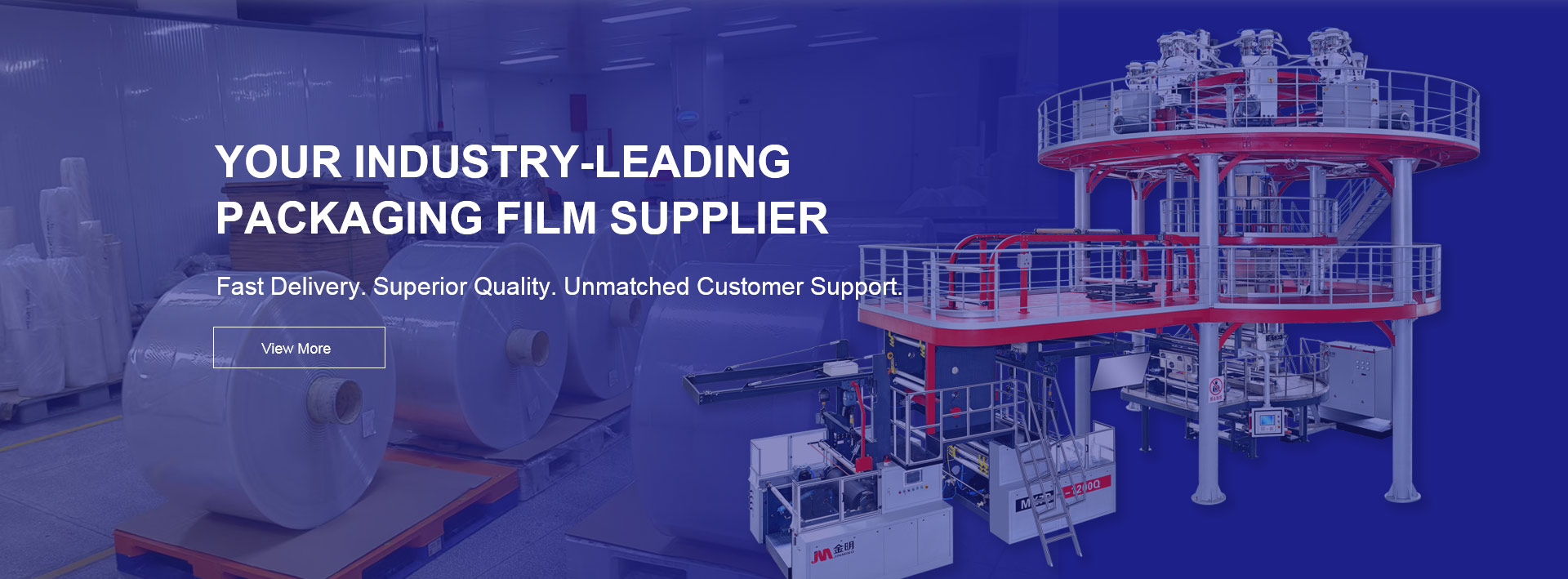
Barrier Food Packaging Film is a specialized material engineered to protect food products from external factors such as oxygen, moisture, light, and contaminants. Its primary role is to extend the shelf life of food, preserve freshness, and maintain product quality throughout transportation and storage. Unlike standard plastic wraps, barrier films incorporate advanced polymer layers that block gas transmission, reducing spoilage and flavor degradation over time.
Barrier films are widely used in the packaging of perishable products including meat, cheese, snacks, sauces, coffee, and frozen foods. Depending on the product requirements, films can be single-layer or multilayer structures made from polymers such as PET, PA, EVOH, PE, and aluminum foil. The balance between mechanical strength, flexibility, and barrier performance makes these films a vital component in modern food packaging systems.
The structure of a barrier packaging film often includes multiple functional layers designed to serve distinct purposes. A typical multilayer film may look like this:
| Layer Type | Material | Function |
|---|---|---|
| Outer Layer | PET or Nylon | Provides mechanical strength and printability |
| Barrier Layer | EVOH or Aluminum Foil | Prevents oxygen and moisture transmission |
| Inner Layer | PE or CPP | Offers sealing performance and food contact safety |
The combination of these materials results in a highly durable and efficient film. The outer layer resists puncture and provides excellent clarity for product display, while the barrier layer controls oxygen transmission rates (OTR) and water vapor transmission rates (WVTR). The inner sealing layer ensures tight sealing even under variable temperature and humidity conditions.
Barrier films can achieve oxygen transmission rates as low as 0.1 cm³/m²/day and water vapor rates below 0.5 g/m²/day. These figures ensure minimal oxidation and moisture absorption, keeping food products crisp, aromatic, and visually appealing for longer periods.
For retail packaging, visual appeal plays a critical role. Advanced co-extruded barrier films maintain high transparency and surface gloss, allowing consumers to see the product clearly while protecting it from environmental exposure.
Barrier films maintain tensile strength between 100–150 MPa depending on thickness and composition. This mechanical integrity ensures that packages resist tearing, puncturing, and damage during automated packing and logistics handling.
Many barrier films can tolerate temperature ranges from -40°C to +120°C. This allows their use in both freezing and retort sterilization processes, making them suitable for frozen meals, ready-to-eat foods, and microwaveable products.
Depending on the food category, permeability levels can be adjusted. For instance, cheese or fresh vegetables require controlled gas exchange to prevent spoilage, while dry goods benefit from near-zero permeability. This tunability makes barrier films versatile across diverse applications.
Barrier packaging films serve different functions across multiple food categories:
High-barrier vacuum films prevent oxidation and discoloration in fresh and processed meats. They keep the color and texture intact by minimizing oxygen penetration and moisture loss.
In cheese and yogurt packaging, barrier films block light and oxygen to prevent fat oxidation and microbial growth. This ensures a consistent flavor profile throughout storage and transportation.
Crisps, nuts, and chocolates are highly sensitive to humidity. Barrier films with low WVTR maintain crunchiness and prevent sugar bloom, keeping the product in prime condition for consumers.
Aluminum-coated barrier films are commonly used for coffee and powdered drink mixes. They protect volatile aroma compounds from dissipating while blocking UV light, preserving the rich flavor for extended shelf life.
Films used in frozen packaging must endure low temperatures and resist cracking. High-barrier materials prevent freezer burn and dehydration while ensuring the seal remains tight during storage and reheating.
The demand for sustainable packaging has led to the development of eco-friendly barrier films using recyclable or bio-based materials. Manufacturers now use mono-material structures such as PE/PE or PP/PP laminates to maintain barrier performance while allowing full recyclability. Additionally, coatings based on silicon oxide (SiOx) or aluminum oxide (AlOx) provide transparency and barrier efficiency without the need for aluminum foil, reducing environmental impact.
These new materials are also lighter and easier to process, cutting transportation emissions and improving production efficiency. The combination of performance and sustainability makes barrier food packaging films a key player in the green transition of the packaging industry.
Beyond protection, barrier films enhance food safety and branding potential. They serve as a secure barrier against contamination, ensuring hygiene from production to consumption. Films also support advanced printing technologies—such as flexographic and digital printing—that allow high-definition branding, ingredient labeling, and traceability codes without compromising barrier performance. This balance of function and aesthetics supports strong consumer trust and brand identity in competitive markets.
For high-quality and reliable barrier packaging solutions, JINBORUN stands out as a trusted manufacturer. With advanced multilayer co-extrusion technology and precise control of gas permeability, JINBORUN produces films tailored to diverse food packaging needs. Their materials ensure long shelf life, superior sealing strength, and customizable optical clarity—ideal for applications ranging from fresh food to frozen goods. Through continuous innovation and strict quality standards, JINBORUN provides both performance and sustainability, supporting global food manufacturers in maintaining freshness and safety across their products.
In summary, barrier food packaging film is more than just a wrapping material—it is a vital technology that safeguards food integrity, enhances visual appeal, supports eco-friendly initiatives, and upholds brand reputation. With specialized suppliers like JINBORUN leading innovation, the future of food packaging continues to evolve toward higher efficiency, sustainability, and consumer confidence.